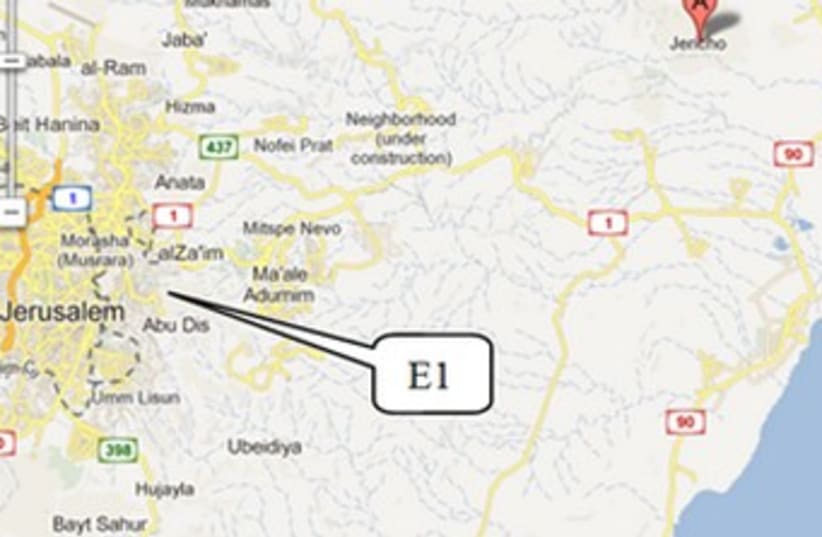"..when the story is just too big and the public appetite too great, there has been significant and reckless disregard for accuracy. Similarly, as evidenced from a range of stories in different titles, it is clear that misrepresentation and embellishment takes place to a degree far greater than could ever be thought of as legitimate or fair comment".
In media reports about Israel, misrepresentation and embellishment of facts is egregiously evident. This is most recently seen in regards to the announcement by the Israeli government of its intention to build 3,000 housing units in the area adjacent to Jerusalem known as E1 (East 1). This article neither defends nor opposes the announcement, but serves to examine the facts absent in a sensationalist media arena.The criticism of the announcement to build in E1 is that it is unnecessary, untimely, unwise, undiplomatic and even belligerent. Opinions on both sides can be justified, but they should not be used as an excuse to disregard truth. Falsities include claims by the news media and politicians that building in E1 will bisect the West Bank and prevent the creation of a contiguous Palestinian state. The repeated rhetoric (with no attempt at verification) is that the cities of Ramallah and Bethlehem will be cut off from each other and from Jerusalem, but this is egregiously misleading.A glance at a Google map shows the area of E1 comprises the stretch of land between Jerusalem and Ma’ale Adumim. According to a January 2008 census, the Israeli settlement has a population of 34,495. As can be seen, the claims of bisection are untrue because a wide area still remains between the eastern border of Ma'ale Adumin and Jericho. There have also been suggestions for an additional north-south road between Ma'ale Adumim and Jerusalem.Moreover, Ma’ale Adumim Mayor Benny Kashriel has invited European ambassadors to visit E1 to see for themselves that construction would be within municipal boundaries and wouldn’t harm the creation of a Palestinian state.While the timing and manner of Prime Minister Binyamin Netanyahu's announcement was unfortunate and clumsy, there is no excuse for editors and politicians to be misinformed about matters on which they comment. Instead of putting out hysterical headlines and summoning ambassadors in a frenzied protest to Netanyahu’s announcement, they would actually realize these actions were disproportionate.The facts are that the decision to build in E1 didn’t originate with the Netanyahu government. Almost two decades earlier, in October 1994, Ma'ale Adumim was expanded to include E1 by then late prime minister Yitzhak Rabin. Kashriel was then provided with the annexation documents.Even the Geneva Initiative, the ambitious peace model recognizing neighboring Israeli and Palestinian states, proposed that Ma'ale Adumim be incorporated into Israel. Secretary General of the PLO Executive Committee Yasser Abed Rabbo supported this as well as former foreign affairs minister Yossi Beilin, who, by the widest stretch of the imagination, cannot be considered a right-winger.It may surprise many to realize that in Rabin’s path to peace, he had no intention of returning to the 1967 lines.In his last speech just a few weeks before his tragic assassination, Rabin said:"First and foremost, united Jerusalem, which will include both Ma'ale Adumim and Givat Ze'ev -- as the capital of Israel, under Israeli sovereignty... The security border of the State of Israel will be located in the Jordan Valley, in the broadest meaning of that term.”
Famed British journalist C.P. Scott stated in his celebrated 1921 essay, A Hundred Years that "Comment is free, but facts are sacred." Journalists have an obligation to uphold integrity and observe this tenet. As Lord Justice Leveson wrote in paragraph 37 of his executive summary, the standard of truth to which journalists are obligated to uphold are written in many of their contracts. “There seem to be few internal consequences for breach,” he wrote. “Whether that breach was established as an inevitable conclusion following litigation or after criticism by the Press Complaints Commission." The media operates in the business of holding others accountable. But they cannot ignore their own duty to hold themselves responsible for the information they provide.
